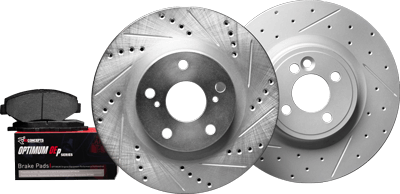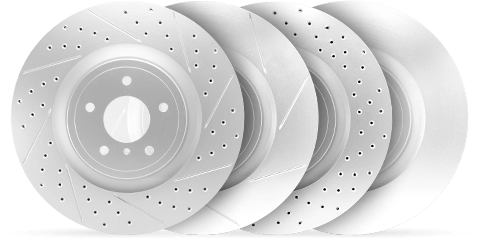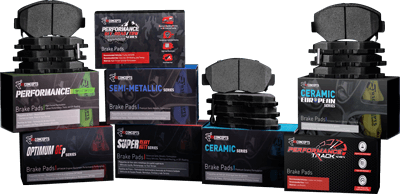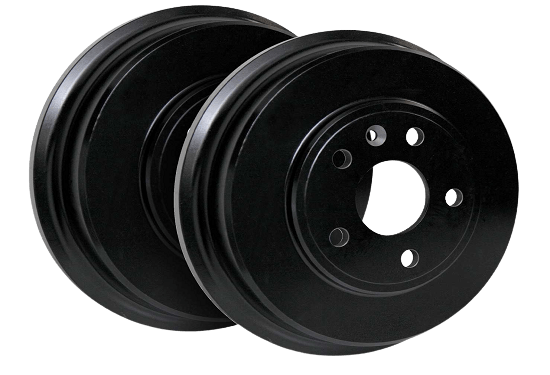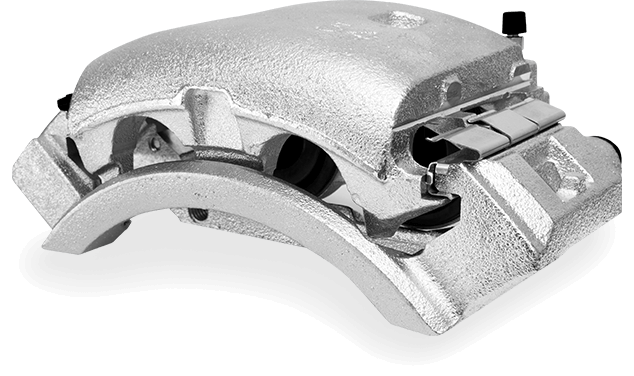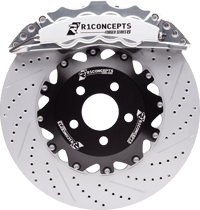Confused about what type of brake fluid do I need? In this guide, we clarify which DOT-rated brake fluid fits your vehicle’s design and driving demands. Keep reading to understand the distinctions between glycol-based and silicone-based fluids and to find the manufacturer-recommended type for your car.
Key Takeaways
- Brake fluids are categorized by DOT numbers indicating boiling points that affect performance; DOT 3, 4, and 5.1 are glycol-based, while DOT 5 is silicone-based, and incompatible with others.
- Mixing different DOT types of brake fluids can lead to decreased boiling points and compromised braking systems; sticking to the vehicle manufacturer’s recommended fluid type is essential for safety.
- Regular maintenance and changing of brake fluid is crucial, typically every two years or 30,000 miles, and should be done by professionals to preserve brake system efficacy and safety.
What Type Of Brake Fluid Should I Use For My Car?
For the right brake fluid for your car, check the owner’s manual. It tells you exactly what type your car needs. This way, you make sure you’re using the fluid that’s meant for your car’s braking system.
To determine the correct type of brake fluid for your car, consider the following steps:
- Consult Your Owner’s Manual: The most reliable source for information on the type of brake fluid your car requires is the owner’s manual. It will specify the DOT classification recommended by the manufacturer.
- Check the Master Cylinder Reservoir Cap: Often, the cap of the brake fluid reservoir will have the DOT specification for the brake fluid type that should be used in your vehicle.
- Look for Manufacturer Labels or Decals: Some vehicles may have labels or decals under the hood or in the engine compartment that indicate the required brake fluid type.
- Vehicle Age and Model: The age and model of your vehicle can also give you a clue. Older vehicles typically use DOT 3, while many newer models are likely to require DOT 4 or DOT 5.1.
- Braking System Specifications: If your car has advanced features like ABS or traction control systems, it may require a specific type of brake fluid, such as DOT 4 or DOT 5.1, due to their lower viscosity.
- Consult a Professional Mechanic: If you are unsure, consult a professional mechanic who can provide expert advice on the appropriate brake fluid for your car based on its specific requirements.
- Previous Maintenance Records: If you have access to previous maintenance records of the vehicle, they may indicate which brake fluid type was used during past services.
Different Types Of Brake Fluid And Specifications

Each type of DOT brake fluid is formulated to meet specific performance requirements and safety standards. It is crucial to use the type of brake fluid that is recommended by the vehicle manufacturer to ensure proper function of the brake system and maintain safety on the road.
What Does DOT Mean?
The term “DOT” in brake fluid classification stands for “Department of Transportation,” which is the U.S. federal agency that regulates the quality standards for brake fluids. Each DOT number corresponds to a specific boiling point and chemical composition that suits different vehicle requirements.
Types of DOT Brake Fluids and Their Differences
Brake fluids are essential for the safety and performance of a vehicle’s braking system, and they come in several DOT classifications, each with unique properties and applications. Here’s a breakdown of the different types of DOT brake fluids and their major differences:
DOT 3 Brake Fluid
DOT 3 brake fluid is a glycol-based fluid commonly used in many standard vehicles. It has an initial boiling point of about 401 degrees Fahrenheit. Over time and with the absorption of moisture, the boiling point can decrease, which may affect braking performance. It is suitable for a wide range of driving conditions but may need to be changed more frequently due to its hygroscopic nature.
DOT 4 Brake Fluid
DOT 4 brake fluid also falls under the glycol-based category and has a higher initial boiling point of around 446 degrees Fahrenheit, making it suitable for vehicles that operate under more demanding conditions, such as in high-performance or heavy-duty applications. It is often recommended for European cars and offers better resistance to moisture compared to DOT 3.
DOT 5 Brake Fluid
Distinct from the glycol-based fluids, DOT 5 brake fluid is silicone-based and is not hygroscopic, meaning it does not absorb moisture from the atmosphere. It has a higher boiling point which makes it stable over a longer period of time. However, it is only compatible with certain types of brake systems and should not be mixed with other DOT fluids as it can lead to system damage.
DOT 5.1 Brake Fluid
DOT 5.1 is a glycol-based fluid like DOT 3 and DOT 4 but with a higher boiling point, akin to DOT 5. It is designed for high-performance and severe-duty applications but, unlike DOT 5, can be mixed with DOT 3 and DOT 4 fluids. This type of fluid is often used in vehicles with ABS and traction control systems because of its low viscosity.
Is Higher Always Better?
When selecting brake fluid, the DOT number indicates its boiling point—higher numbers can withstand more heat. But it’s not just about withstanding heat; different fluids are formulated for specific vehicle needs and may have additives that improve performance under high temperatures.
Think of DOT 3 as the regular choice that works fine for most cars and lasts a decent amount of time. DOT 4 is like the upgraded version that’s better for really hot places or fancy European cars. It doesn’t mean you should always go for the higher number, though. It’s more important to use what your car’s maker says is right.
Is It Safe To Mix Brake Fluid?
No, mixing brake fluids of different DOT classifications can compromise the braking system’s safety and performance. Each type of brake fluid is engineered to work within a specific temperature range and has unique properties, so combining them can lead to unpredictable chemical reactions and degradation of the fluid’s ability to perform under high temperatures.
When to Refresh Your Brake Fluid

Maintaining peak braking performance necessitates the periodic replacement of your brake fluid, as it wards off moisture accumulation. To ensure effective brake operation, a general guideline is to flush out your vehicle’s brake fluid once every two years or upon reaching 30,000 miles traveled. Those who regularly drive short distances and apply their brakes often may need more frequent flushes due to higher levels of moisture absorption attributed to such driving patterns.
It’s essential not to overlook this maintenance task because if water finds its way into the brake fluid it can inflict serious damage internally – from corroded brake lines and compromised seals to calipers that become stuck. The prompt exchange of old fluid for new ensures that the hydraulic pressure within the system remains at appropriate levels which are vital for ensuring that your vehicle’s braking mechanism functions correctly.
Recognizing the Telltale Signs
Understanding the appropriate time to replace your brake fluid is essential. Several indicators might alert you to a low or compromised condition of the brake fluid, such as when the ABS dashboard light comes on, which could signify that it’s time for a change due to diminished fluid levels.
Should you experience an uncharacteristically soft, spongy or bouncy sensation upon pressing the brake pedal, this often points towards an issue with either insufficient or degraded brake fluid. It’s important in these cases to get your vehicle checked and possibly update the fluid. Any decline in braking effectiveness — including unusual sounds or odors while applying brakes — strongly implies that there may be a decrease in your car’s brake-fluid level that requires immediate attention.
DIY vs. Professional Brake Fluid Service
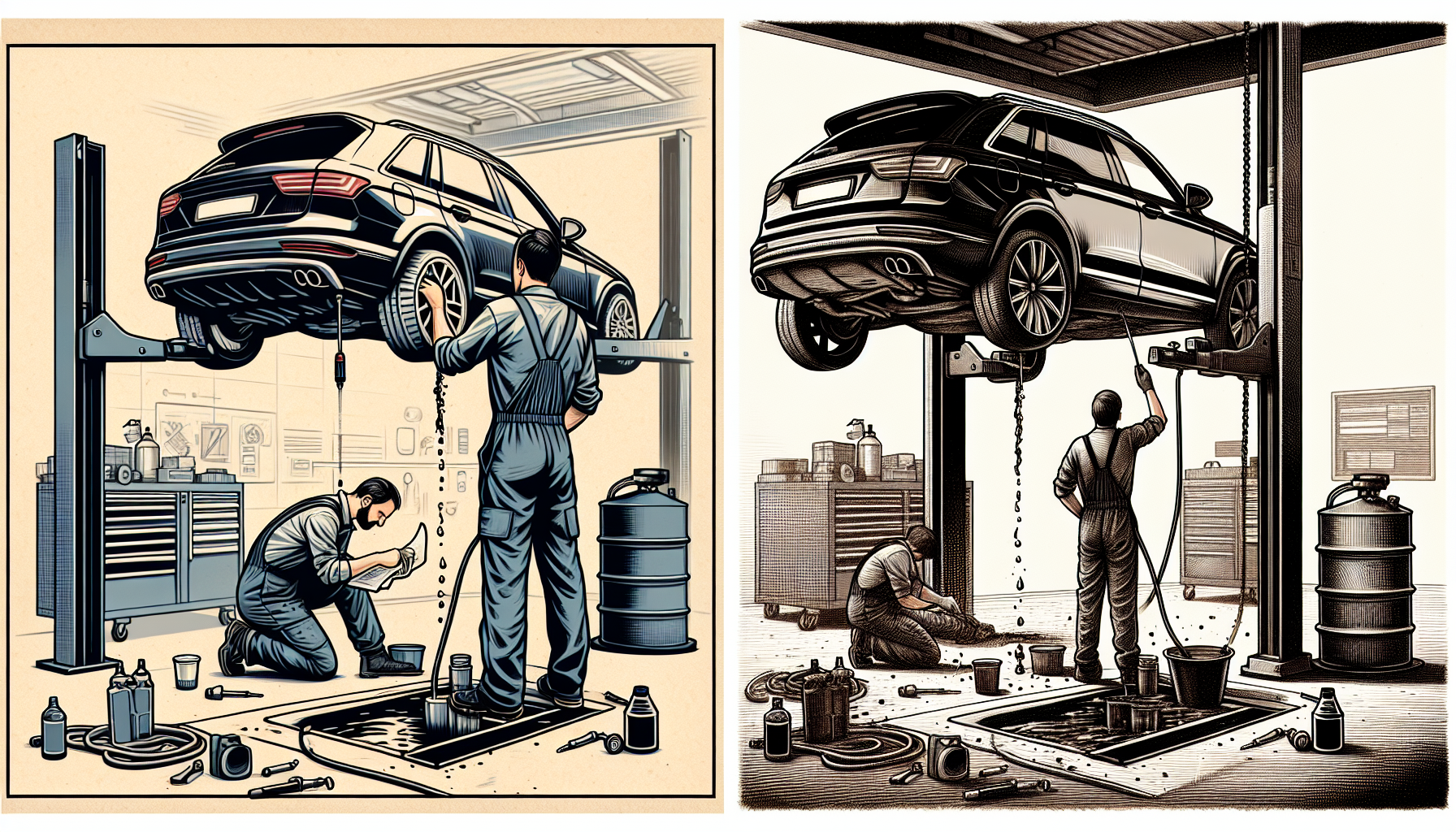
Deciding between performing a brake fluid change yourself or engaging the expertise of a professional is often debated. Opting for professional service can be advantageous as it guarantees:
- A thorough purge of the old fluid from the system
- Accurate replenishment with fresh brake fluid
- The cycling process to ensure only clean, new fluid remains in circulation
- Enhanced braking effectiveness on your vehicle
Employing the services of an auto mechanic shop locally can present several perks including:
- Convenience and time-saving benefits
- Assurance that the flush and replacement are executed precisely
- Protection against potential damage to vital ABS and traction control systems by eliminating contaminated, aged fluids
- Compliance with essential vehicle upkeep practices
- Increased safety measures due to expert handling
- Eco-friendly disposal procedures for expended fluids
Committing to skilled maintenance involving your hydraulic brakes – such as having periodic inspections and replacements for both your brake calipers and pads along with getting your brake fluid professionally flushed – represents a judicious decision regarding automobile care.
Shopping for Brake Fluid: Where to Purchase the Right Type for Your Car
Considering you’re in the market for brake fluid, determining where to begin is crucial. Auto parts retailers such as O’Reilly Auto Parts stock the appropriate kind of brake fluid that you’ll need. To ensure it suits your vehicle perfectly, employ filters that sort options by Year, Make, and Model of your car. It’s vital to focus on quality when choosing between DOT 3 or DOT 4 brake fluids because superior synthetic blends offer enhanced wet and dry boiling points.
In pursuit of making an informed choice regarding your purchase, many auto part outlets provide educational resources or How-To Hubs. These tools are instrumental in helping you comprehend the intricacies of your vehicle’s braking system and underscore the significance of selecting a compatible brake fluid for optimal performance within this system.
Safety First: Handling Brake Fluid with Care

Safety must be the foremost concern when dealing with brake fluid, as it poses a risk of chemical burns upon contact. To safeguard against this danger, ensure that you wear protective gloves to prevent skin exposure. Conduct all work involving brake fluid in an area where there is ample ventilation to avoid breathing in toxic fumes.
To protect yourself from potential risks associated with handling brake fluid, make sure to wear both safety glasses and gloves. This protective gear will offer crucial defense against any harm that might arise during the process.
Managing Spills: Quick Actions to Protect Your Vehicle
In the event of a brake fluid spill, it’s important to take quick action. Here are the steps you should follow.
- Use an absorbent towel to dab up as much brake fluid as possible right away, being careful not to spread it by wiping.
- Once you’ve absorbed the excess fluid, clean the area with a mild cleaner or automotive soap.
- To ensure all of the brake fluids is removed, rinse off the area completely with water.
Brake fluid has been known to cause damage to car paintwork occasionally. Should there be any noticeable changes in coloration or other types of damage to your vehicle’s exterior post-spill, consider visiting an auto body shop for professional advice and potential restoration services such as touch-up work or repainting jobs.
Summary
Grasping the importance of brake fluid along with its DOT specifications is essential for ensuring peak performance and safety in your vehicle’s braking system. It is vital to perform routine fluid exchanges, select the appropriate type of fluid, and manage it cautiously as part of preserving your vehicle’s brakes. Thus, when you find yourself either at home working on your car or browsing an auto parts store remember that choosing the correct brake fluid can significantly impact overall functioning.
Frequently Asked Questions
What kind of brake fluid do i need?
Consult your vehicle handbook for the specific type of brake fluid required, but most vehicles use DOT4.
Is all DOT 4 brake fluid the same?
Not every DOT 4 brake fluid is identical, despite all varieties meeting the DOT 4 standard. Provided a vehicle necessitates the use of DOT 4 brake fluid and it’s used as per manufacturer’s recommended conditions, any brand conforming to this specification should be compatible with that vehicle.
Should I use DOT 3 or 4 brake fluid?
Opt for DOT 4 brake fluid as it boasts a superior boiling point to DOT 3, thereby offering greater resilience against the heat-induced decline and diminished braking effectiveness.
This elevated boiling point renders it exceptionally suitable for ensuring dependable braking performance and safeguarding the integrity of your vehicle’s brake system.
What does the DOT number on brake fluid mean?
The boiling point of brake fluid, which impacts how it behaves across different temperatures and driving scenarios, is signified by its DOT number.
How often should I change my brake fluid?
To preserve the safety and effectiveness of your braking system, it is recommended that you replace the brake fluid either every two years or after driving 30,000 miles to ensure optimal functioning of the brakes.
Are All Brake Fluids The Same?
No, all brake fluid is not the same. Brake fluids differ in their chemical composition and performance characteristics. There are primarily three types:
- DOT 3: Glycol-based, suitable for most cars, but has lower boiling points.
- DOT 4: Glycol-based with higher boiling points than DOT 3, suitable for high-performance and newer vehicles.
- DOT 5: Silicone-based, non-hygroscopic (does not absorb water), suitable for classic and military vehicles but not compatible with DOT 3 or DOT 4 systems.
The differences matter because brake fluids must maintain performance under high temperatures and pressures. Using the wrong type can lead to reduced braking efficiency, system damage, and safety risks.
Published Date: August 4, 2021
Originally Published By: Team R1 Concepts
Updated Date: June 12, 2024
Updated By: Annjocel Gapasin


